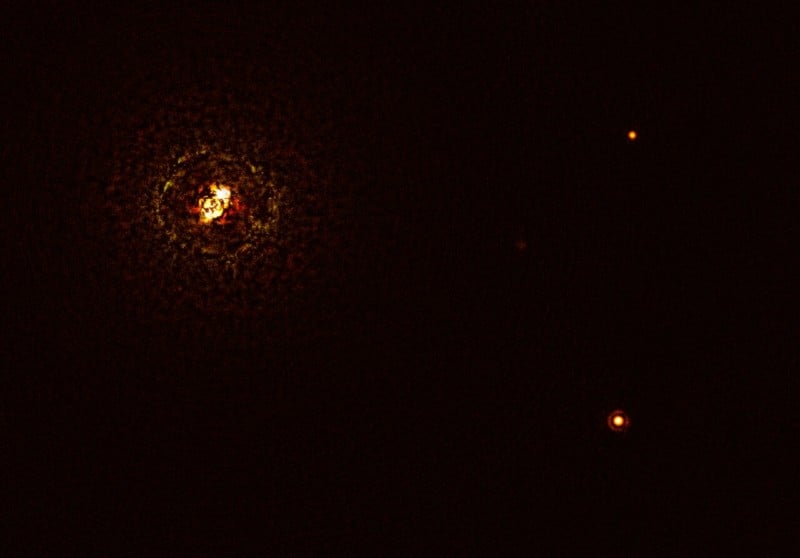Photo of Massive Planet Orbiting Two Giant Stars Surprises Scientists
![]()
The European Southern Observatory’s (ESO) Very Large Telescope (VLT) has captured a photo of a planet orbiting b Centauri, which challenges many previous theories regarding massive stars and their ability to host planets.
Located about 325 light-years away in the constellation Centaurus, b Centauri is a two-star system that is at least six times the mass of the Sun, which makes it easily the most massive system that has ever been confirmed to host a planet in its orbit. The ESO says that until now, no planets had ever been seen orbiting a star more than three times as massive as the Sun, making this discovery significantly unexpected and changing perspectives on previously held beliefs about massive stars and their ability to host planets in their orbit.
“Finding a planet around b Centauri was very exciting since it completely changes the picture about massive stars as planet hosts,” Markus Janson, an astronomer at Stockholm University, Sweden and first author of the new study says.

ESO says that the large mass and heat that is generated from this type of star have a significant impact on the surrounding gas that should work against the ability of planets to form. b Centauri, like other massive stars, is extremely hot. The so-called B-type star is over three times hotter than the Sun and emits large amounts of ultraviolet and X-ray radiation. The hotter the star is, the more radiation it produces which would therefore cause surrounding material to evaporate faster, inhibiting the formation of a planet.
“B-type stars are generally considered as quite destructive and dangerous environments, so it was believed that it should be exceedingly difficult to form large planets around them,” Janson adds.
Yet, somehow and against all previously held theories, a planet managed to form.

This discovery proves that planets can actually form even in these extreme conditions. The ESO notes that the planet appears to be as extreme as its environment, and boasts a size 10 times that of Jupiter which makes it one of the most massive planets ever discovered. It also moves around b Centauri in one of the largest orbits ever observed, 100 times greater than the distance of Jupiter from the Sun. The scientists believe this massive orbit is one of the reasons the planet has been able to survive its proximity to b Centauri.

“The planet in b Centauri is an alien world in an environment that is completely different from what we experience here on Earth and in our Solar System,” explains co-author Gayathri Viswanath, a PhD student at Stockholm University.
“It’s a harsh environment, dominated by extreme radiation, where everything is on a gigantic scale: the stars are bigger, the planet is bigger, the distances are bigger.”
Image credits: Header photo by ESO/L. Calçada and is an artist’s impression. It shows a close up of the planet b Centauri b, which orbits a binary system with mass at least six times that of the Sun. This is the most massive and hottest planet-hosting star system found to date. The planet is ten times as massive as Jupiter and orbits the two-star system at 100 times the distance Jupiter orbits the Sun.